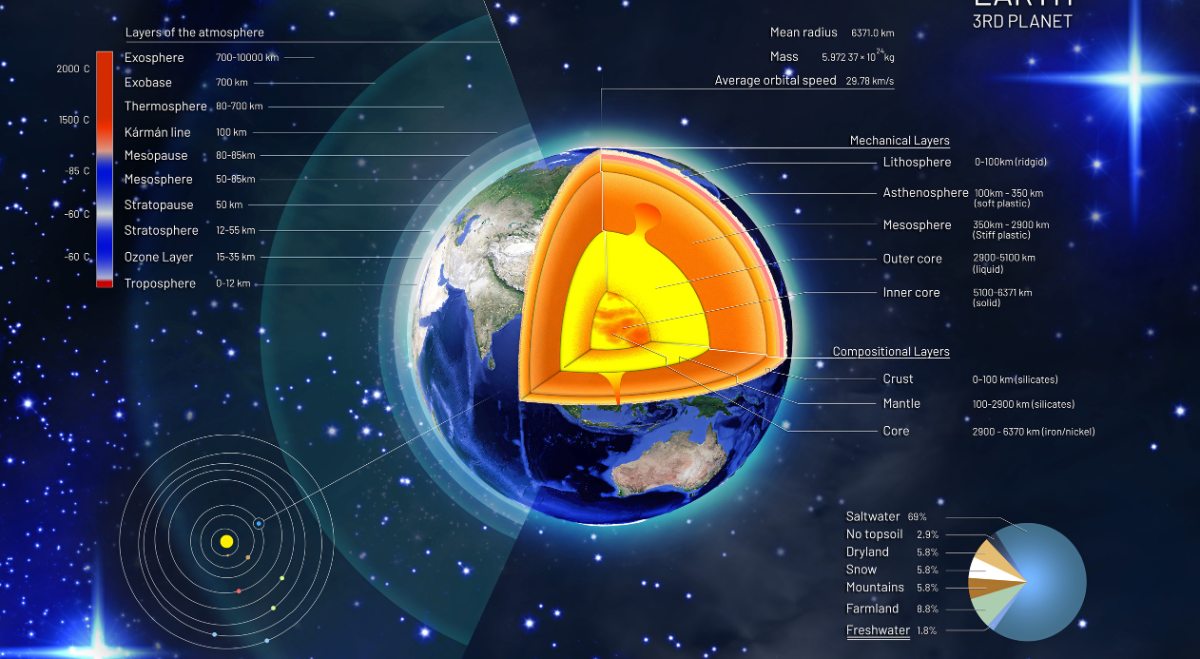Layers of Atmosphere: The Earth’s atmosphere is like an invisible blanket that surrounds our planet and makes life possible. It protects us from harmful solar radiation, keeps the temperature balanced, and helps in the formation of weather patterns. Without it, the Earth would be too cold to live on during the night and too hot during the day. The air we breathe, the clouds we see, and even the rain we feel all exist because of the atmosphere. It stretches around 10,000 kilometers from the Earth’s surface and is made up of several layers, each having its own unique role. These layers vary in temperature, density, and composition as you move higher above the ground. From weather changes to the movement of satellites, everything happens within these layers.
Check out: Where Was the First Nuclear Power Plant Set Up in India?
Layers of Atmosphere
Let’s take a look at the five main layers of the Earth’s atmosphere:

1. Troposphere
The Troposphere is the lowest and most important layer of the atmosphere because it’s where we live and breathe. It extends up to about 8 to 15 kilometers from the Earth's surface. All weather events, such as rain, storms, and snow, occur here. Around 75% of the total air mass and almost all water vapor are found in this layer. The temperature decreases as you go higher in the troposphere. Airplanes also fly at the upper boundary of this layer, known as the tropopause.
2. Stratosphere
Above the troposphere lies the Stratosphere, which extends up to about 50 kilometers above the Earth. This layer contains the ozone layer, which plays a key role in protecting us from the Sun’s harmful ultraviolet (UV) rays. Unlike the troposphere, the temperature in the stratosphere increases with height due to ozone absorbing solar radiation. This layer is also known for being calm and stable, which is why jet aircraft often fly here to avoid turbulence.
3. Mesosphere
The Mesosphere comes next, extending from around 50 to 85 kilometers above the Earth’s surface. It’s the coldest layer of the atmosphere, with temperatures dropping as low as -90°C. This is also where most meteors burn up before reaching the Earth, creating what we see as “shooting stars.” Since there’s very little air here, humans can’t survive without special suits.
4. Thermosphere
The Thermosphere lies above the mesosphere and extends up to 600 kilometers. This layer gets extremely hot, with temperatures rising up to 2,500°C or more, but since the air is very thin, it wouldn’t feel hot to us. The Aurora Borealis (Northern Lights) and Aurora Australis (Southern Lights) occur in this layer due to charged particles from the Sun interacting with Earth’s magnetic field. The International Space Station (ISS) orbits within this layer.
5. Exosphere
The Exosphere is the outermost layer of the atmosphere. It extends from around 600 kilometers to 10,000 kilometers above Earth and gradually merges with outer space. It has extremely thin air, mainly made up of light gases like hydrogen and helium. Satellites orbit the Earth within this region. There’s no clear boundary between the exosphere and space; it just slowly fades away.
Check out: [UPDATED] List of Top 10 Most Spoken Languages in the World
Conclusion
The atmosphere is a complex yet fascinating system that keeps our planet alive and stable. Each layer plays a vital role, from giving us breathable air to shielding us from space debris and radiation. Understanding these layers helps scientists study weather, climate change, and space phenomena better.
Comments
All Comments (0)
Join the conversation